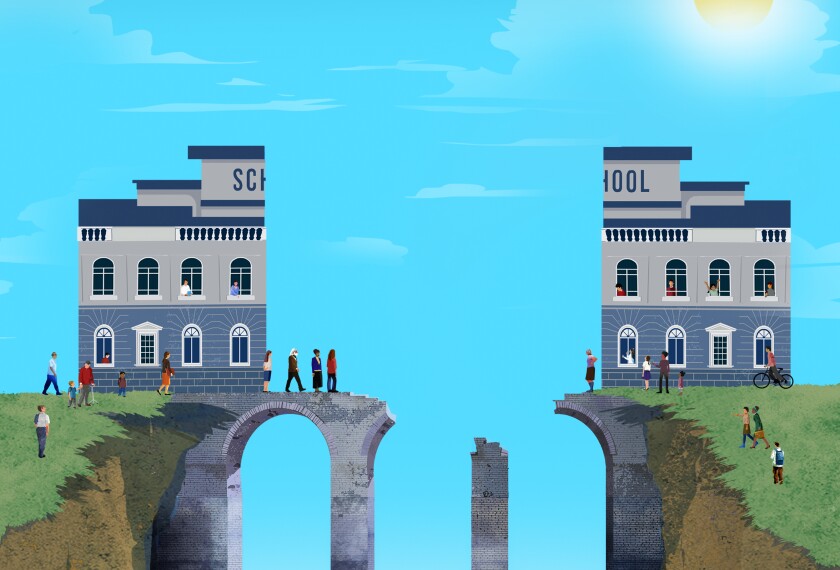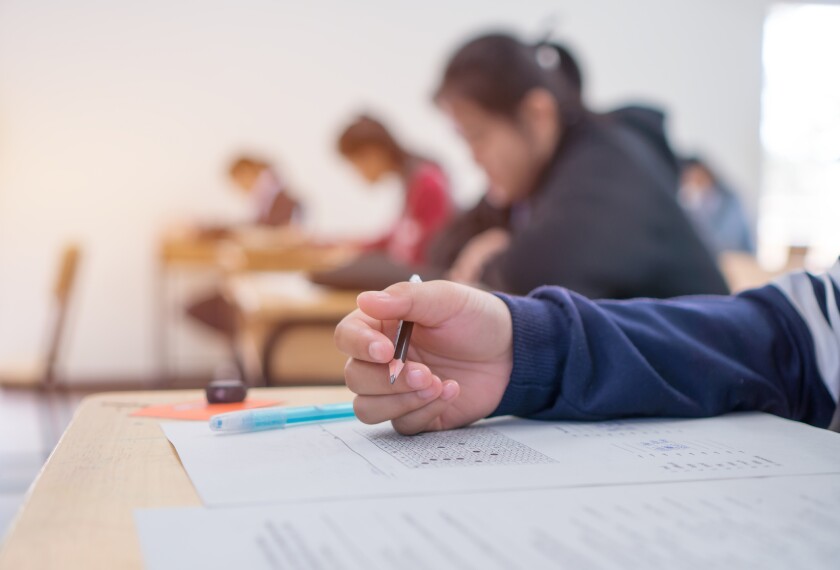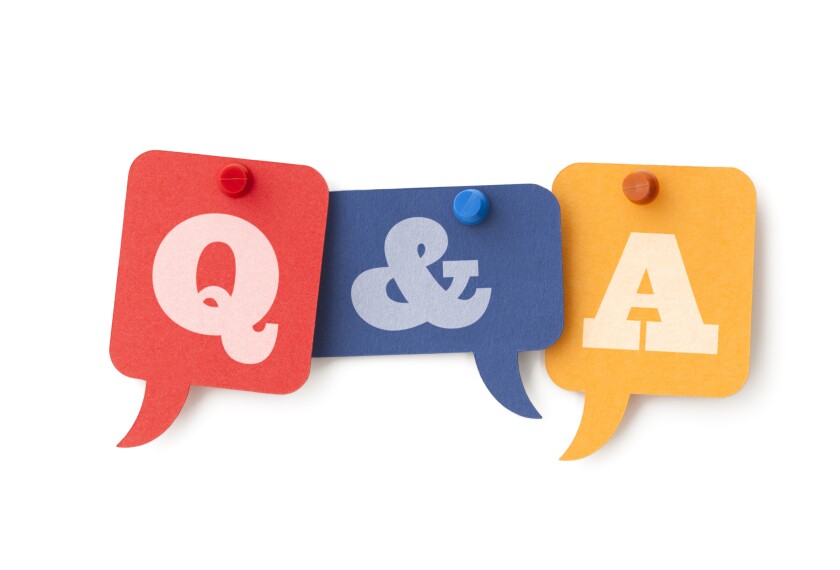Shari Conditt has been a teacher for nearly 25 years. She’s taught a variety of social studies courses and has always addressed presidential—and midterm—elections in class, starting with the 2000 election between George W. Bush and Al Gore.
She has taught the College Board’s Advanced Placement U.S. Government and Politics course since 2012 at Woodland High School in Washington and has accumulated best practices from her years of instruction.
Even as national political discourse online and in media coverage has grown increasingly divisive, Conditt plans to stick with her years of experience in covering presidential elections and other political current events in class this year.
She spoke with Education Week about how such instruction has worked over the years and her goal for teaching things like presidential debates. This conversation has been edited for length and clarity.
Teaching U.S. presidential elections isn’t easy
Oftentimes people will ask me, “Are you prepared to teach this election? It looks like a really tough one.” And I say, “I haven’t had a presidential election yet that was easy for me to manage.” I taught the 2000 election [in a U.S. history course] and I told my kids that we were going to know who the winner was that night of that election. Turns out, not so much, we found out in the middle of December.
I don’t think elections are necessarily remotely easy to teach regardless of who your candidates are. I think people have really strong opinions about certain candidates, and I think as a result, we wrap those opinions and our emotions into how we think about presidential elections.
When I taught the 2012 election, what it looked like to me was making sure that my students had an understanding of the primary organizational components of elections. Oftentimes the structures that social studies teachers tend to live in when we’re dealing with political issues is that if we can deal with underlying structures, it’s a safe place to engage.
For example, talking about primaries, talking about campaign finance, looking at conventions. Those are the underlying structures in an election cycle. I went with that traditional way of teaching the content, looking at those structures, making sure students understood an election calendar, understanding what are the windows in which you’re going to see this funding structure in place, and what is a convention, and why does the city matter where the conventions are held. It wasn’t specific to a candidate.
When I taught the convention this past year in AP [U.S. Government and Politics], I used a video from the 2016 convention on ABC News of a day one debrief of the [Republican National Convention] and a day one debrief of the [Democratic National Convention], and I just would follow a pattern continually so that there was no question of partisanship or ideological framework that I’m giving to my students. I’m just showing them a format and a structure.
The importance of deep dives and managing sensitive topics
AP [U.S. Government and Politics] is far more in-depth [than some other courses]. We’ll talk about campaign finance. I’ll have students pull data and start looking at fundraising records, etc. I think that’s really interesting for them to see the role of interest groups. And we talk about PACs and super PACs. We also look at political ads, which I would not necessarily do in my AP [U.S. History] class or my U.S. History II class. We also talk about debates.
2016 was a bit of a unique one. I like to watch presidential debates with my students when I want to help frame them. But we don’t get into the world of, do we agree with the answer? I’m more interested in looking again at the structure of debate. Did you feel like the question got answered? Did you feel like there was too much interrupting?
It’s right around dinner time here, when the debates usually turn on at 6 o’clock. So my kids will come from sports practice and I’ll feed them. We’ll have dinner together as a class here at school and watch the debate. And so we watched the first debate [between former Secretary of State Hillary] Clinton and [former President Donald] Trump, and it went fine. I think my students handled themselves incredibly well. They had some great feedback.
And then, some information got released through the media on the Access Hollywood video, and I just started feeling really uncomfortable about how I was going to address some of those questions in class and what that was going to look like in the next debate. I decided I just was not in a place where I could manage that. I gave the students some tools to be able to watch at home.
Adapting to virtual learning after the 2020 election
2020, obviously, was incredibly unique, because all these things were virtual. This is the COVID-19 learning time so I was not with my kids in class during the debate. Instead what we decided to do was, we Zoomed into the first debate. It was contentious, I think is a diplomatic word, and I had decided to go off screen. I needed to do that for my own personal needs. I didn’t want my students looking [at] my face to see how I was going to react to things. What I found fascinating about that is that my students didn’t know that that first debate between [President Joe] Biden and Trump wasn’t regular. They didn’t have context to what a debate should look like.
When we did the debrief afterward, none of them were highlighting the sniping, the rudeness, the stepping over each other, and the lack of respect [for] the moderator—some of these things which, as folks who watch debates for years and years, would have immediately noticed. So thankful for resources that exist because I was able to go back and find historic debates. When I showed my students the 1960 [then Vice President Richard] Nixon and [then Senator John F.] Kennedy debate, where Kennedy is complimenting Nixon, and Nixon is complimenting Kennedy, the students were floored.
I think students really struggle with some of those contexts because they don’t have a historical background. Part of my job as an AP [U.S. Government and Politics] teacher is to help them see that evolution in that process, too.
Plans for this year: Encouraging media literacy
[For this year], my plan is to get my student population together on Sept. 10, and watch the debate from the Constitution Center here at my high school, and begin to have some of those conversations. I want to have them engage by talking about how we fact check. How do we know if the fact check is accurate?
Most of the juniors roll into my classes as seniors, from AP U.S. History to AP [U.S. Government and Politics]. I’ve already told them that the conventions were happening [by the start of this school year.] I told them when they were and what to look for. I will start [this year] generally speaking, by reviewing some of those concepts.
I tend to do it through the lens of media. I don’t want to be the person giving all the information out. I just feel like that’s kind of a disengaging place for students, if I’m the one telling them what I think all the time, and it doesn’t necessarily meet my own values as a teacher because I want my students to explore and have inquiry, versus just me being the sage on the stage.
Having my students look at various media sources to summarize what they see the media saying about various events I think is a better place to live. I’ll have my students pick an article on a certain topic, but it’s from four or five different media sources. So let’s look at, how does Fox News present a wrap-up of the DNC, how does MSNBC do a wrap-up of the DNC?
I would much rather spend my time building the muscle so that they can determine perspective and see truth through multiple perspectives—and then it takes the pressure off of me, the teacher.
Disclaimer: The copyright of this article belongs to the original author. Reposting this article is solely for the purpose of information dissemination and does not constitute any investment advice. If there is any infringement, please contact us immediately. We will make corrections or deletions as necessary. Thank you.







